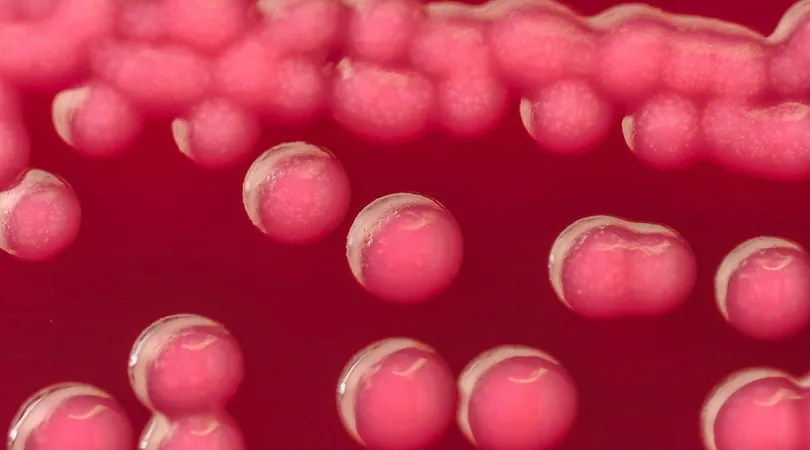
Revolutionary Breakthrough: Common Bacteria Engineered to Produce Biodegradable Bioplastics!
2025-04-08
Author: Daniel
A groundbreaking study from a research group in South Korea has harnessed the power of E. coli bacteria to create poly(ester amide)s, a new type of bioplastic with desirable thermal and mechanical properties and a potential for biodegradability. This innovative method promises a path toward sustainable plastic production that could transform the industry.
Led by Sang Yup Lee, a distinguished professor at the Korea Advanced Institute of Science and Technology in Daejeon, the team’s research indicates that this eco-friendly approach might be far more sustainable than traditional plastic manufacturing methods that rely on fossil fuels. According to Lee, "Petroleum-based plastics rely heavily on crude oil or natural gas, while bio-based polymers utilize renewable biomass generated from carbon dioxide fixation, moving us closer to carbon neutrality. For the future of plastic, a shift toward a bio-based production system is essential."
The Marvel of Poly(ester amide)s
Poly(ester amide)s are versatile materials that incorporate both ester and amide bonds, yielding properties that merge the benefits of polyamides (like nylon) and polyesters (such as the widely-used PET in food packaging). These bioplastics not only possess excellent thermal and mechanical characteristics typical of synthetic polymers, but they also offer biocompatibility and a significant potential for biodegradability.
Their unique properties make them ideal candidates for various applications, including medical solutions like drug delivery systems, cardiovascular stents, and tissue scaffolds, as well as eco-friendlier alternatives to traditional plastics.
Revamping Plastic Production through Genetic Engineering
While certain bacteria are known to produce polyesters naturally (like polyhydroxyalkanoates, or PHAs, used in shopping bags and agricultural mulch), most do so in quantities too low for commercial viability. However, researchers can enhance the polyester production capacity via genetic engineering, notably through strains like E. coli. Until recently, producing poly(ester amide)s with bacterial enzymes presented a significant challenge.
In their latest study, the team effectively adapted prior knowledge from polyester synthesis and applied novel techniques to empower E. coli in the production of poly(ester amide). Utilizing glucose derived from plant-based waste as the main energy source in fermentation, researchers made pivotal adjustments by introducing enzymes from Clostridium and Pseudomonas bacteria into E. coli—a strategy that initially hindered growth but ultimately led to improved efficiency.
Additionally, the team enhanced the amino acid lysine production while blocking lactic acid generation to streamline polymer formation. Interestingly, they discovered that altering the amino acid balance in the nutrient feed for the bacteria influenced the final properties of the produced poly(ester amide).
Challenges Ahead for Commercial Viability
Despite the promise of this innovative research, Lee and his team face significant challenges in scaling up production to make it economically feasible. Although transferring the process from lab-scale flasks to larger bioreactors has yielded better bacterial output efficiency, further advancements are essential to compete against existing industry practices.
"We need to bolster the performance of our microbial factories to enhance economic competitiveness," Lee explained. The goal is to optimize both the fermentation process and subsequent steps for recovery and purification once a robust microbial strain is ready.
While the project is still in its early stages, the researchers are actively pursuing commercial collaborations to explore the potential deployment of this groundbreaking technology. Lee confirmed, "We're engaging with companies interested not only in poly(ester amide)s but also in other polymers that are being produced more efficiently in our lab."
This innovative approach to bioplastics could herald a new era of eco-friendly materials that address both environmental concerns and the needs of various industries. Keep an eye out for this exciting development that could significantly change how plastics are produced!


 Brasil (PT)
Brasil (PT)
 Canada (EN)
Canada (EN)
 Chile (ES)
Chile (ES)
 Česko (CS)
Česko (CS)
 대한민국 (KO)
대한민국 (KO)
 España (ES)
España (ES)
 France (FR)
France (FR)
 Hong Kong (EN)
Hong Kong (EN)
 Italia (IT)
Italia (IT)
 日本 (JA)
日本 (JA)
 Magyarország (HU)
Magyarország (HU)
 Norge (NO)
Norge (NO)
 Polska (PL)
Polska (PL)
 Schweiz (DE)
Schweiz (DE)
 Singapore (EN)
Singapore (EN)
 Sverige (SV)
Sverige (SV)
 Suomi (FI)
Suomi (FI)
 Türkiye (TR)
Türkiye (TR)
 الإمارات العربية المتحدة (AR)
الإمارات العربية المتحدة (AR)